This is a simple lechon manok roasted in the oven. When you think of lechon manok, it should be roasted on burning charcoals skewered on a spit. There are many variation of lechon manok and it differs only on the kinds of marinade and the stuffing used in the chicken. Well, the key ingredient, I think, when cooking lechon manok is the lemon grass. This stuffing is what differs on this roasted chicken from the rest. The recipe I have here is a Cebu lechon manok but it is roasted in the oven. I remember someone visiting this blog ask me if I have a recipe of baked lechon manok.
So here it is. You can use this recipe on cooking baked lechon manok but in my opinion, roasting the chicken in the charcoal taste better than oven roasted. But on the contrary, it is more convenient using the oven rather than sweating yourself and enduring the heat of a rotisserie. Also, before I forget, there is a tip I want to share. When roasting the chicken, turn it breast-side down while wrapped in the aluminum foil. This way, the breast will absorb the marinade and juices while on its first stage of cooking. Then breast side up after you removed the foil and brown the chicken until crisp.
Baked Lechon Manok, Really?
Lechon manok always brings me back to weekend gatherings with my family. It was often the centerpiece of our meals, with its crispy skin, aromatic stuffing, and juicy meat. While traditionally roasted over burning coals, which imparts a smoky flavor, I’ve discovered that you can still make an amazing version in the oven. Today, I’m sharing a recipe for baked roasted chicken inspired by the famous Cebu style—without the need to break out the charcoal grill.
But first, let me say: there’s something about the aroma of lemongrass. It’s the magic ingredient that gives this roast chicken its signature fragrance and taste. If you ask me, it’s the lemongrass that truly makes this dish stand out.
A Taste of Tradition
When you think of lechon manok, your mind might drift to street vendors turning chickens on spits over open flames. In the Philippines, this is a common sight, especially during festivals and special occasions. Vendors use various marinades and stuffing combinations, each family often boasting their secret recipe passed down through generations. My lola, for instance, swore by stuffing her chicken with both lemongrass and a slightly underripe banana.
I first learned this oven-baked variation after my uncle, who had just returned from Cebu, shared his cooking tip: “Why not try baking it?” he suggested one Sunday. While it lacks the smoky flavor of charcoal grilling, this method is perfect for home cooks looking for a simpler yet still authentic way to enjoy roasted chicken.
The Secret to Flavorful Chicken: Lemongrass and More
Now, let’s talk about the star of the show—lemongrass. If you’ve ever had traditional Filipino lechon manok, you’ll notice the bright, citrusy aroma coming from the chicken, and that’s largely thanks to the lemongrass. Its strong, slightly lemony scent infuses into the meat during cooking, giving the dish a unique and unforgettable flavor.
In Cebu-style roast chicken, lemongrass isn’t just an afterthought; it’s the hero. Stuffing the cavity with it ensures that its oils seep into every inch of the chicken, marrying with the garlic, ginger, and soy sauce. A little trick I picked up from my aunt is adding a banana to the stuffing. Yes, a banana! It might sound unconventional, but it adds a subtle sweetness that balances the salty and savory marinade.
Why Baked Instead of Grilled?
I’ll be honest, there’s something special about the smoky flavor of grilled lechon manok. My sister, who once lived in Cebu, often told me that nothing compares to the taste of chicken roasted over an open fire, but let’s face it—not all of us have access to a charcoal rotisserie. This is why I started experimenting with baking, and to my surprise, it turned out to be a great alternative.
For one, using an oven makes the process less labor-intensive. Instead of standing over a grill, turning the chicken every few minutes, you can relax while the oven does the work. And as a bonus, you won’t be sweating from the heat of the coals!
Still, there’s one technique I insist on using regardless of whether you’re grilling or baking: start roasting the chicken breast-side down. I learned this from my mom, who always told me that it helps the juices settle into the breast, ensuring it stays moist. Once the chicken is almost done, remove the foil, flip it, and let the skin turn golden and crisp.
The Journey of Lechon Manok
Lechon, whether it’s whole pig or roasted chicken, has always been a symbol of celebration in the Philippines. It’s served during big family reunions, fiestas, and holiday feasts. Though lechon baboy (roasted pig) might be more famous, the chicken version is no less beloved. It’s quicker to prepare, more affordable, and just as flavorful.
This Cebu-style variation stands out for its emphasis on the stuffing and marinade. The combination of lemongrass, soy sauce, garlic, and ginger gives the chicken a zesty, savory punch. The addition of a banana, though a bit unusual, provides a hint of sweetness that elevates the dish.
How to Serve and Enjoy
Once your chicken is perfectly roasted, don’t forget the dipping sauce. Growing up, my family always served lechon manok with a simple yet delicious sauce made from vinegar, chopped onions, and a touch of freshly ground pepper. The vinegar’s acidity cuts through the rich chicken skin, while the onions add a sharp bite. Sometimes, we’d even add chili peppers for an extra kick.
If you’re feeling adventurous, you can experiment with other side dishes. Some love serving it with a Filipino-style potato salad, while others prefer garlic rice or even pancit on the side. No matter how you enjoy it, this baked roast chicken is sure to be the star of the meal.
A Little Tip from Me to You
One last piece of advice: when roasting, always check your chicken’s internal temperature. You want to make sure it reaches at least 165°F in the thickest part of the meat. This ensures your chicken is cooked through but still juicy.
And while this oven-baked version is easier to pull off, I still recommend giving the traditional charcoal-grilled method a try whenever you have the chance. There’s something about the crispy skin and smoky flavor that’s just so satisfying.
But for now, I’m more than happy with this baked version. The convenience, paired with the same fragrant stuffing and bold flavors, makes it a winning recipe in my book. It’s comfort food that brings the warmth of home, whether you’re in the heart of Cebu or far away in your own kitchen.
Now, time to grab a fork and dig in!
Cebu Lechon Manok (Baked)
Ingredients
- 1 whole large dressed chicken
- 1 tsp. table salt
- 1 tsp. ground black pepper
- 1 head garlic minced
- 1/2 Tbsp. ginger minced
- 1/2 cup soy sauce
- 4 stalks lemon grass
- 2 pcs saba bananas quartered
- Aluminum foil
Instructions
How to cook Baked Cebu Lechon Manok:
- Rub the skin and inside of the chicken with salt and pepper. Then rub the skin of the chicken with garlic, ginger and soy sauce.
- Stuff the chicken with lemon grass and bananas. Wrap the chicken tightly with aluminum foil.
- Roast in a preheated 400 °F oven for about an hour. Then open the foil and let it roast until the skin is golden brown and crisp (approximately 30 minutes or more).
- Serve with dipping sauce made from a mixture of vinegar, onions and pepper.
Video
Notes
Cooking Tips:
Perfecting the Marinade
To achieve a rich, deep flavor in your roast chicken, make sure to thoroughly rub the garlic, ginger, and soy sauce into both the skin and the cavity. Allow the chicken to marinate for at least an hour, or overnight if possible, to let the flavors penetrate deeply. This will ensure that every bite of the chicken is flavorful and aromatic.Achieving Crispy Skin
For crispy skin, start by roasting the chicken wrapped in aluminum foil to keep it moist. Once the initial cooking time is up, carefully remove the foil and let the chicken roast uncovered until the skin turns golden brown and crisp. This method helps to lock in juices while giving you that deliciously crunchy exterior.Flavorful Stuffing
When stuffing the chicken, make sure to place the lemongrass and bananas snugly inside the cavity to maximize flavor infusion. The lemongrass imparts a fragrant aroma, while the bananas add a subtle sweetness that enhances the overall taste. Be sure to tie the legs and wings close to the body to keep the stuffing in place and ensure even cooking.
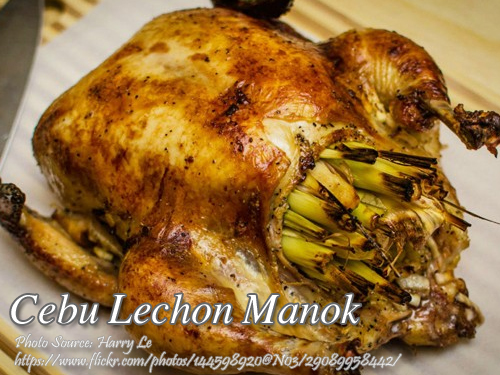

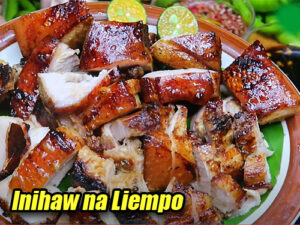
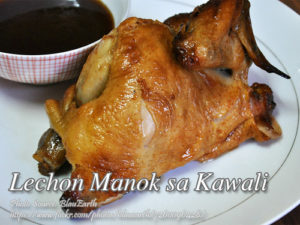
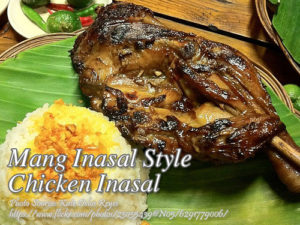
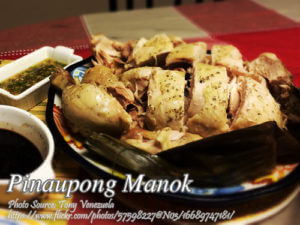
Could I use a banana leaf instead of aluminum foil?
Hi Lorna, Sure you an use banana leaves. ðŸ˜
Only the top portion of the lechon gets crispy. How do you make the other side of the pork belly lechon crispy.?
Hi Nenette, I think you should cook the other side again until it gets gets crispy.